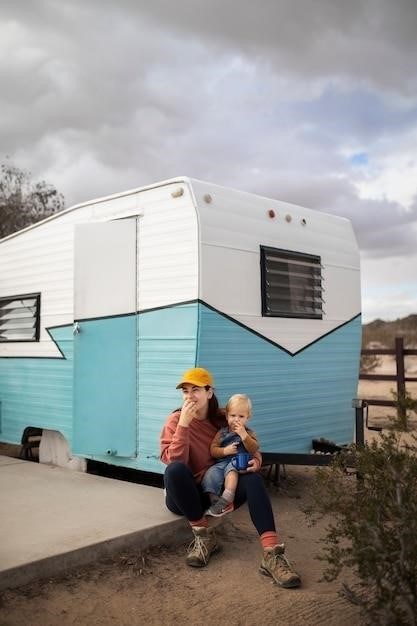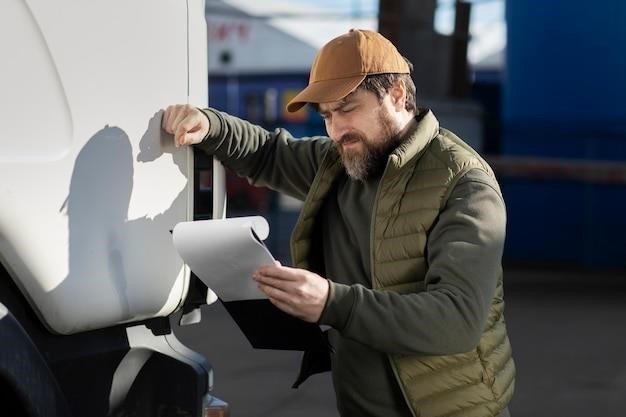
RV generators are essential for providing power on the road, but they can sometimes malfunction. This guide will provide you with troubleshooting steps to help you identify and resolve common problems. From no power output to engine starting issues, we’ll cover a range of scenarios and provide solutions to get your generator back up and running.
Introduction
RV generators are invaluable companions for campers and RVers, providing power when plugged-in electricity is unavailable. But like any mechanical device, they can experience issues. Knowing how to troubleshoot these problems can save you from frustration and ensure your generator remains a reliable source of power. This guide is designed to equip you with the knowledge and steps to diagnose and fix common RV generator problems. We’ll delve into various scenarios, from engine starting difficulties to power output issues, providing practical solutions for each. While professional assistance might be needed for complex repairs, understanding the basics of generator troubleshooting empowers you to address simple problems yourself.
Whether you’re a seasoned RVer or a newbie on the road, this guide will equip you with the knowledge and confidence to handle common generator issues. By understanding the basics of troubleshooting, you’ll be better prepared to diagnose and solve problems, keeping your RV generator running smoothly and providing reliable power during your adventures.
Common RV Generator Problems
RV generators, while reliable, can experience a range of issues. Identifying these common problems is the first step in troubleshooting. One frequent issue is a lack of power output. This could indicate a problem with the generator’s engine, electrical system, or fuel supply. Another common problem is an engine that won’t start. This might be caused by a faulty starter, a dead battery, or issues with the fuel system; Sometimes the generator runs but doesn’t produce power. This could point to a problem with the generator’s alternator, wiring, or a faulty circuit breaker. Overheating is another concern. Excessive heat can be caused by a lack of airflow, a clogged air filter, or a failing cooling system. Fuel issues, such as a clogged fuel filter, a faulty fuel pump, or low fuel levels can also lead to problems. Finally, electrical problems, including faulty wiring, loose connections, or a blown fuse, can disrupt the generator’s operation.
By understanding these common problems, you can start pinpointing the source of the issue and take appropriate steps to resolve it. This guide will provide you with specific troubleshooting steps for each of these common problems, helping you to get your RV generator back up and running.
Troubleshooting Steps
Troubleshooting an RV generator requires a systematic approach to pinpoint the issue. Begin by checking the basics. Ensure the generator is properly connected to the RV’s electrical system and that the circuit breaker is turned on. Next, check the fuel level. A low fuel level can prevent the generator from starting or running properly. If the fuel level is sufficient, inspect the fuel lines for any leaks or blockages. Additionally, examine the air filter for any dirt or debris that might be restricting airflow. A clogged air filter can hinder the engine’s performance.
Consider the generator’s environment. Excessive moisture, dust, or dirt can affect the generator’s operation. If the generator is exposed to these conditions, clean it thoroughly and ensure it’s stored in a dry and protected area. If the generator is still not working, you may need to consult a qualified technician. Improper troubleshooting can damage the generator and shorten its lifespan. Remember, a properly maintained RV generator will provide reliable power on the road, ensuring a smooth and enjoyable travel experience.
No Power Output
If your RV generator is running but not producing power, there are several possible culprits. Start by checking the generator’s circuit breaker. Ensure it is properly engaged and not tripped. Next, inspect the generator’s output connections. Loose or corroded connections can interrupt the flow of electricity. Tighten any loose connections and clean any corrosion. If the connections are secure, check the generator’s transfer switch. This switch directs power from the generator to the RV’s electrical system. Ensure the transfer switch is in the “generator” position. If all these checks are satisfactory, the problem might lie within the generator itself.
A faulty alternator or a problem with the generator’s wiring could be the cause. In such cases, you’ll need to seek professional assistance from a qualified technician. They can diagnose the issue and repair or replace any faulty components. Remember, working on electrical components can be dangerous. If you’re not comfortable working with electrical systems, it’s best to leave it to the professionals. A properly functioning RV generator provides essential power for your adventures, so ensuring it’s in good working order is crucial.
Engine Won’t Start
A generator that won’t start can be frustrating, but troubleshooting the issue systematically can help pinpoint the problem. First, check the fuel supply. Ensure the fuel tank is not empty and that the fuel lines are free from blockages. If the fuel level is adequate, inspect the fuel filter. A clogged filter can prevent fuel from reaching the engine. Replace the filter if it appears dirty or damaged. Next, check the battery connections. Loose or corroded connections can interrupt the flow of power to the starter motor. Tighten any loose connections and clean any corrosion.
If the battery connections are secure, check the battery itself. A weak or dead battery won’t provide enough power to start the engine. Test the battery voltage using a multimeter. If the voltage is low, the battery needs to be charged or replaced. If the battery is healthy, examine the starter motor. A faulty starter motor will not engage the engine. You may hear a clicking sound but no cranking. If the starter motor is suspect, you’ll likely need to replace it. Finally, check the ignition system. A faulty spark plug or ignition coil can prevent the engine from igniting. Inspect these components and replace them if necessary.
Generator Runs but Doesn’t Produce Power
A generator that runs but doesn’t produce power can be a perplexing issue. The problem lies in the electrical system, and it’s important to approach troubleshooting with caution. First, check the circuit breaker; A tripped circuit breaker can prevent power from reaching the outlets. Reset the breaker and see if power is restored. If the breaker trips again, there might be a short circuit or overload in the system. Next, inspect the generator’s output wires. Look for loose connections, broken wires, or signs of damage. Tighten any loose connections and repair or replace any damaged wires.
If the output wires are in good condition, check the generator’s voltage regulator. A faulty voltage regulator can cause erratic or insufficient voltage output. Test the voltage output of the generator using a multimeter and compare it to the specified output voltage. If the voltage is too low or fluctuating, the voltage regulator may need to be replaced. Finally, examine the generator’s alternator. A worn or damaged alternator can’t produce the necessary power. Inspect the alternator for signs of wear and tear. If the alternator is suspect, it may need to be replaced.
Overheating
Overheating is a serious issue that can lead to damage to your RV generator. If you notice your generator running hot, it’s essential to address the problem promptly. The most common cause of overheating is a lack of proper airflow. The generator needs adequate ventilation to dissipate heat. Make sure the generator is not blocked by debris, foliage, or other obstructions. Check the air intake and exhaust vents for any blockages. Also, ensure the generator is level to prevent oil from pooling in the crankcase.
Another potential culprit is low oil levels. Insufficient oil can cause friction and heat buildup. Check the oil level regularly and add oil as needed. If the oil level is consistently low, there might be a leak. Inspect the oil pan and seals for any signs of leaks. A faulty cooling system can also contribute to overheating. The cooling system helps to regulate the temperature of the engine. Check the coolant level and ensure it’s full. If the coolant is low or dirty, it may need to be flushed and replaced. Finally, consider the ambient temperature. In hot weather, generators are more prone to overheating. If you’re operating the generator in extreme heat, it’s important to run it for shorter periods and allow it to cool down between uses.
Fuel Issues

Fuel problems are a common cause of RV generator malfunctions. The first step is to check the fuel level. Make sure the generator has an adequate supply of fuel. If the fuel tank is low, simply refill it. However, if the fuel level is consistently low, there might be a leak. Inspect the fuel lines, connections, and tank for any signs of leakage.
Next, examine the fuel filter. A clogged fuel filter can restrict fuel flow and cause engine problems. Replace the fuel filter as recommended in the generator’s owner’s manual. Old or contaminated fuel can also be a source of issues. If the generator has been sitting for a long time, drain and replace the old fuel. Use fresh, high-quality fuel that meets the generator’s specifications.
The fuel pump is responsible for delivering fuel to the engine. A faulty fuel pump can prevent the generator from starting or running properly. Listen for any unusual noises coming from the fuel pump. If you suspect a problem with the fuel pump, it may need to be replaced. Lastly, check the fuel lines for any kinks or obstructions that could restrict fuel flow. Ensure the fuel lines are properly connected and free of any blockages.
Electrical Problems
Electrical issues can prevent your RV generator from starting or producing power. One common problem is a faulty battery. The generator’s battery provides power for the starting system. If the battery is weak or dead, the generator won’t start. Check the battery terminals for corrosion and clean them if necessary. If the battery is old or damaged, it may need to be replaced.
Another electrical issue could be a problem with the generator’s wiring. Inspect the wiring for any loose connections, frayed insulation, or signs of damage. Ensure all connections are tight and secure. If you find any damaged wiring, it should be repaired or replaced. The generator’s circuit breaker or fuse may also be tripped. Check the circuit breaker or fuse box and reset or replace any tripped breakers or blown fuses.
The generator’s control panel can also cause electrical problems. Inspect the control panel for any loose or damaged components. Check the switches and controls to ensure they are functioning properly. If you suspect a problem with the control panel, it may need to be repaired or replaced. Lastly, make sure the generator is properly grounded. A faulty ground can cause electrical problems and safety hazards.
Troubleshooting an RV generator can be a complex task, but with the right knowledge and tools, you can often identify and fix the problem yourself. By following the steps outlined in this guide, you can diagnose common issues and get your generator back up and running. Remember to always prioritize safety and consult a qualified technician if you are unsure about any repairs or modifications.
Regular maintenance is crucial for preventing generator problems. This includes checking the oil level, replacing the spark plugs, and cleaning the air filter. You should also ensure the generator is properly ventilated and stored in a dry, clean environment. By following these tips, you can extend the life of your RV generator and ensure it provides reliable power when you need it most.
Whether you’re a seasoned RVer or just starting out, understanding the basics of RV generator troubleshooting can save you time, money, and frustration. With a little knowledge and effort, you can keep your generator running smoothly and enjoy your travels without worrying about power outages.
